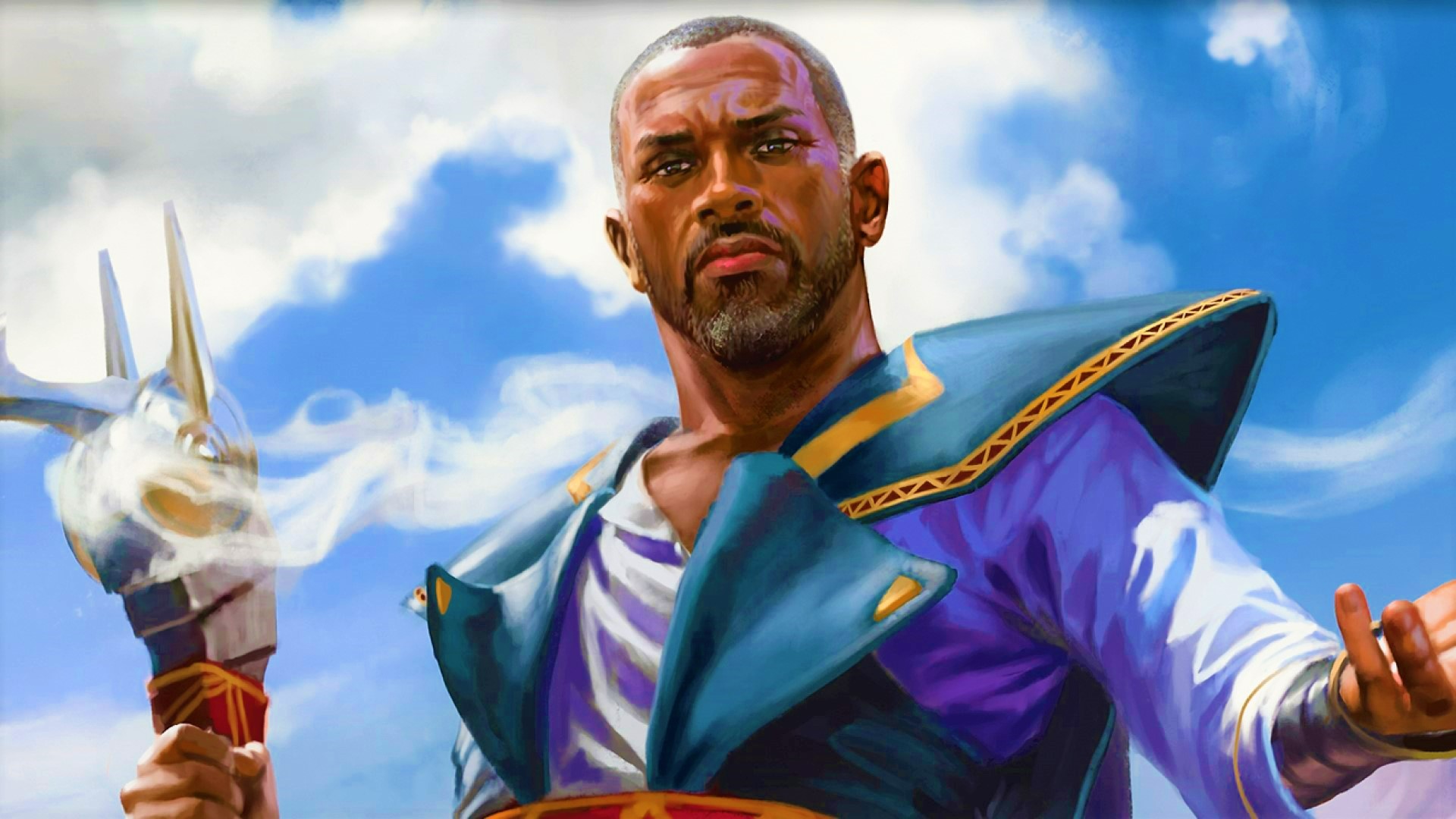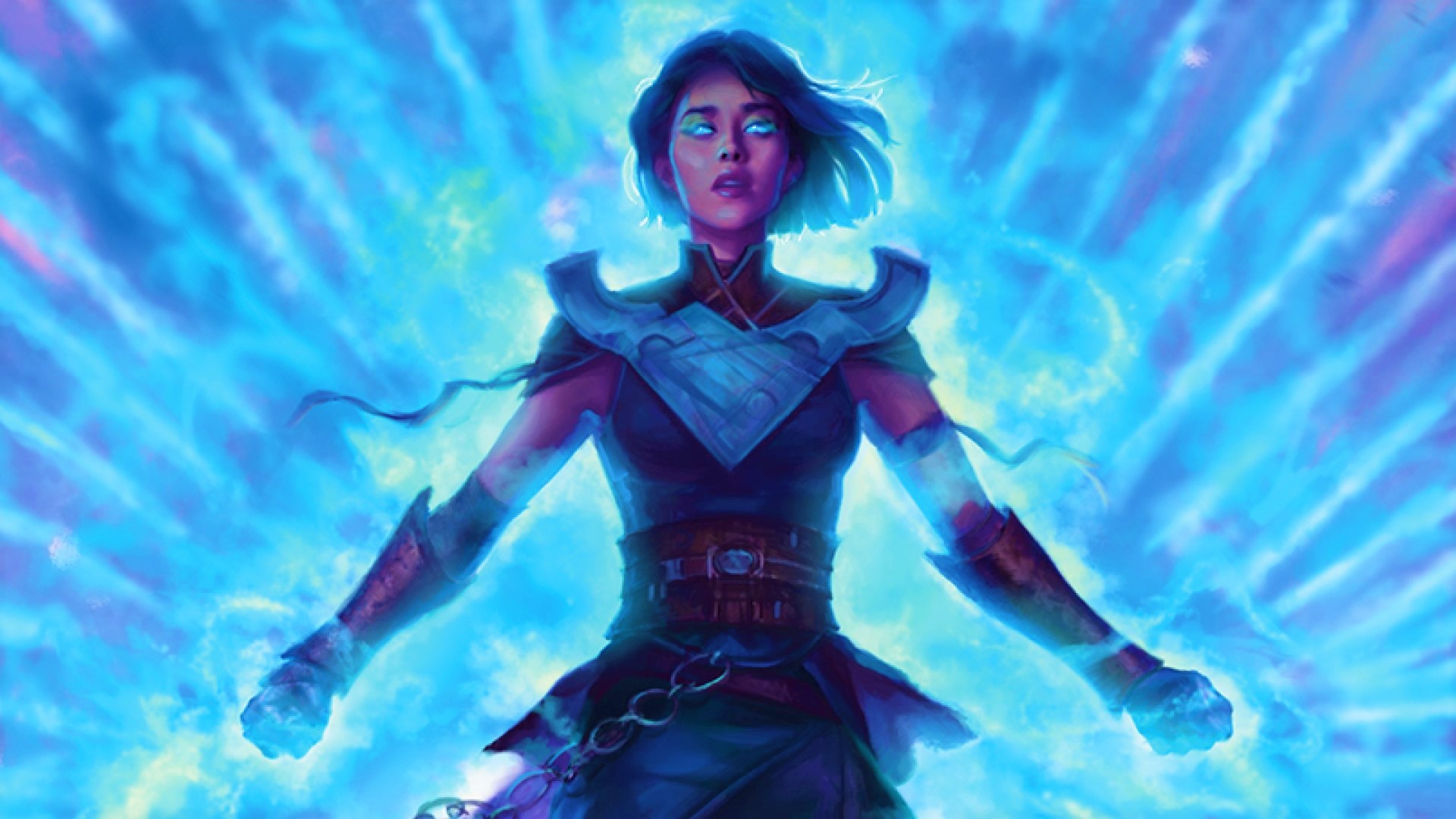The MTG draft may be Limited in format, but it’s by no means limited in nature. Crowd a group of eager TCG players around the table, have them compete for a shrinking pool of random Magic cards, and give them minimal time to plan their cobbled-together decks – this is the formula that makes booster drafting one of the most chaotic, interesting, and downright fun ways to play Magic: The Gathering.
Like every format, you’ll need to know the ins and outs of a MTG draft before you sit down to play. Your deck is going to look very different from the ones played in Standard, Modern, or Commander, and there are a few other nitpicky rules to follow for that proper drafting feel. Once you’ve got these nailed, though, you’ll be prepared to play – though no one can ever truly be prepared for the might (or jank) of a randomised, booster-drafted deck.
What is the MTG draft format
A typical MTG draft is played in eight-player ‘pods’ (though there are variants which change the player number from anywhere between two and eight). A Magic booster draft is a Limited format, so players can only create decks using cards from a specific set and number of MTG products. In this case, each player is given three booster packs (typically from the same set).
Everyone opens one pack, and they remove any non-playable cards. Next, everyone selects a single card from their pack and passes the remaining booster contents to the player on their left. This cycle continues until the first round of boosters are empty. Here the second pack is opened, with its contents now being passed to the right. Pack three is passed to the left. Rinse and repeat until every card has an owner.
With all the cards dished out, players must now build a deck from the cards they chose. These decks must be 40 cards minimum, and basic Lands are the only cards players can add from outside their picks.
Everyone is equal in a Magic draft. There’s no guarantee what cards you’ll get, and there’s no real way to plan ahead of time, so the format relies solely on your knowledge of MTG sets, deck-building skills – and a little bit of luck. This also makes it one of the cheaper ways to play Magic competitively. The only investment needed is the boosters, and no one can tilt the scales with a pre-constructed deck of extreme price and power.
How to build a MTG draft deck
Once you have your cards, it’s time to draft. You might start to sweat staring at your random jumble of singles, but don’t panic – synergy is possible. You’ll just need to do a little on-the-fly planning while making picks.
To make the best MTG draft deck you can, you need to consider a few things as you pass the cards around:
Open mana colours
An ‘open’ mana colour is basically any colour your opponents aren’t choosing during the draft. You’ll be able to gauge which colours are open once the packs start moving around the table – if a strong green card you had in your opening booster makes its way back to you, there may be an opening for green decks in the draft.
This is an important factor to track in drafting, as an open mana colour means you’re more likely to have strong card options to choose from. If you’re competing with the other players for the best picks in a colour, the chances of building a weak deck go up.
You won’t be able to tell which colours are open from your very first pick, but you won’t end up using every card in your final deck, so you can afford to choose a few outliers early on. Plus, many of the best decks in a Magic draft end up being dual-colour.
Mana curve
A strong ‘mana curve’ in a deck looks a lot like a bell curve on a graph. If you organise the cards in your deck by their mana cost, then lay the piles out in ascending order from left to right, you should see the curve – a small number of very cheap cards on the left, a large number of cards with middling mana costs (usually two or three mana) in the centre, and then a small number of high-cost cards at the end.
The main idea behind the mana curve is ensuring you can play the strongest card you have each turn. After all, if you’ve drawn a handful of five-mana cards and a single land on turn one, you’re going to be stuck waiting for something to do. It’s far more effective to have a variety of low-cost cards to choose from. Planning your deck around the mana curve isn’t a perfect strategy in every case, but it’s often a great place to start with drafted decks.
Removal
Draft decks can end up with a variety of win conditions, but chances are a lot of them will be relying on Creatures – either to fulfil one of these win conditions or simply to take your life points out, chunk by chunk. Because of this, cards that help you remove your opponent’s Creatures from play can be a game-changer in your deck. Keep an eye out for them.
Lands
Typically, you don’t need to worry about Lands during a draft, as you’re able to add a suitable amount to your deck after drafting. However, it never hurts to keep an eye out for a dual land that perfectly matches your chosen colours.
There’s also a recommended number of lands for deck-building in a standard draft. Once you’re creating the final version of your deck, you’ll typically want 16 to 18 lands.






